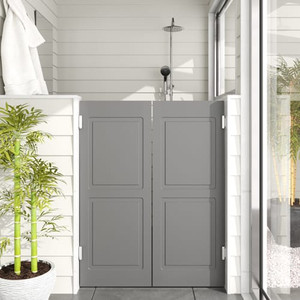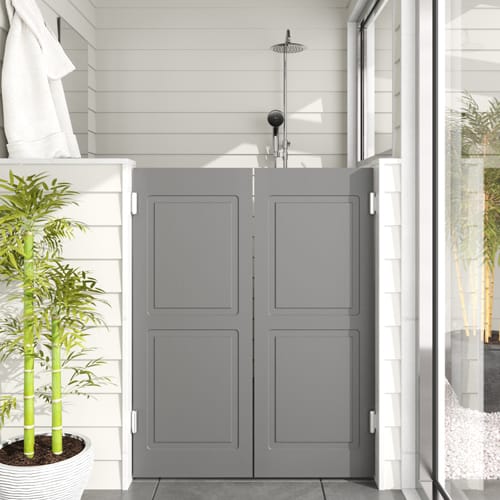
Eco-Friendly Interior Door Materials for Stylish Homes
Exploring Eco-Friendly Innovations in Modern Interior Door Materials: Sustainable Solutions for Stylish Homes
Sustainability is no longer just a buzzword; it’s a crucial consideration in home design and construction. As the collective global conscience pivots towards more eco-friendly practices, interior design is at the forefront of marrying aesthetics with environmental responsibility. Doors, often understated in their environmental impact, play a significant role in the narrative of sustainable living. From the materials chosen to the longevity and operation of the door, each element can contribute to or detract from a home’s commitment to the planet. This comprehensive guide serves as a beacon for eco-conscious homeowners and industry professionals, highlighting the latest sustainable door materials that promise not only a guilt-free environmental footprint but also a chic enhancement to your living spaces.
Introduction to Eco-Friendly Interior Door Materials

In our commitment to building greener environments, the doors we select for our homes are pivotal. They are the gateway to our personal spaces and the segue to a more sustainable lifestyle. This section sets the scene for the importance of integrating environmentally friendly door choices and their pivotal role in fostering green design philosophies in our homes.
Importance of Sustainability in Home Construction
The modern home is not just a shelter; it’s a statement of its owner's values. With climate concerns at the forefront, the need for sustainable construction materials and practices couldn’t be more urgent. The materials we choose impact not only the structure of our homes but also the health of our environment. From carbon footprints to energy efficiency, sustainability underpins the very concept of a home.
Role of Interior Doors in Green Building Practices
Interior doors are more than just partitions within the home; they are an integral part of the building's envelope, affecting heating, cooling, and overall energy efficiency. As such, their manufacturing and materials should be aligned with green principles to ensure they are a beneficial component of the home's sustainability efforts.
Composite Materials
Composite materials offer a blend of durability and environmental consciousness for those seeking a modern, sustainable take on interior door solutions.
Exploring Recycled Composite Options for Interior Doors
Composite materials like wood chips mixed with resin or polymers derived from recycled plastics create a strong, eco-friendly alternative to traditional wood doors.
Advantages of Recycled Composites
- Utilizing Post-Consumer and Industrial Waste
- Composite materials provide a second life to materials that would otherwise contribute to waste streams, making them an excellent choice for the environmentally minded.
- Durable and Long-lasting
- Composite doors can be engineered to be highly durable, able to withstand the wear and tear of daily use, while maintaining their appearance and function over time.
Examples of Recycled Composite Interior Door Materials
Innovative companies are producing door materials that combine recycled wood fibers with bio-resins, creating aesthetically pleasing and robust options for interiors.
Innovative Sustainable Technologies
The world of sustainable materials is not static; it’s continually evolving. Cutting-edge technologies are taking the definition of eco-friendly design to new levels, even when it comes to our interior doors.
Incorporating Advanced Technologies in Sustainable Door Materials
Developments in bio-based resins, 3D printing with recycled materials, and smart sensors for energy efficiency are reshaping the landscape of interior door manufacturing.
Examples of Innovative Sustainable Features
- MDF Doors with Bio-Resin Cores: Medium-density fiberboard (MDF) doors are a popular choice for their affordability and durability.
- Laminated MDF doors now use a soy-based resin, which eliminates formaldehyde emissions while providing a durable and smooth surface finish.
- HDPE recycled lumber doors: High-density polyethylene (HDPE) lumber is commonly used in outdoor decking and furniture.
Customization and Design Possibilities
One concern with sustainable materials is often their adaptability to different design preferences. However, modern eco-friendly door materials are incredibly versatile and can be tailored to individual style.
Tailoring Eco-Friendly Materials to Individual Style Preferences
Customizing an eco-friendly interior door is not only possible but also highly encouraged. Homeowners can choose from a range of finishes, textures, and even inlays to reflect their unique aesthetic.
Custom Finishes, Textures, and Patterns
Sustainable door materials can be finished with non-toxic paints and stains to achieve the desired look, whether that's a high-gloss sheen or a mattified, rustic surface. Intricate textures and patterns can be added to the door surface before finishing, providing an extra layer of personalization.
Integration of Sustainable Materials with Other Design Elements
Eco-friendly doors can seamlessly integrate with other sustainable design elements, such as energy-efficient windows and lighting, to create a harmonious and green living space.
Maintenance and Care Considerations
An often-overlooked aspect of interior doors is their upkeep. Sustainably sourced doors also speak to an investment in longevity and ease of maintenance, preserving both the environment and your peace of mind.
Cleaning and Maintenance Practices for Eco-Friendly Materials
Eco-friendly door materials often require the same maintenance as their traditional counterparts—regular dusting and periodic conditioning to keep them looking their best.
Longevity of Eco-Friendly Interior Doors
Sustainably sourced interior doors are built to last, with measures taken during the manufacturing process to increase their resilience against the ravages of time. Regular care and maintenance can ensure their condition for generations to come.
Conclusion: Embracing Eco-Friendly Innovation in Interior Door Materials
The choices we make for the materials in our homes echo beyond our immediate surroundings. They contribute to a global effort to mitigate climate change and create a healthier planet for future generations. Eco-friendly interior door materials are not only the cornerstone of a sustainable home but also a testament to the beauty and ingenuity possible within the constraints of responsible design.
Frequently Asked Questions (FAQs)
Addressing common queries surrounding eco-friendly interior door materials provides clarity and strengthens the commitment to a sustainable lifestyle.
How do eco-friendly interior door materials compare to traditional options in terms of durability?
Sustainably sourced interior door materials can be just as durable as their traditional counterparts, provided the same care and maintenance. Some materials, like bamboo and cork, boast superior resistance properties.
Can eco-friendly interior doors be customized to fit specific design preferences?
Absolutely. The versatility of many eco-friendly materials allows for a wide range of customizations, from finishes to inlays, ensuring a perfect harmony with your home's design.
Are there any cost considerations when opting for eco-friendly materials?
Initially, the cost of some sustainable materials may be higher due to their innovative production processes or the certification standards they meet. However, the long-term benefits, such as lower maintenance needs and a reduced environmental impact, often outweigh the upfront expenditure.
Can I install eco-friendly interior doors myself, or do I need professional help?
The complexity of installation depends on the material and the door type. It is recommended to consult with a professional for installation, especially with novel materials that may require specific expertise.
What are the environmental benefits of using bamboo for interior doors?
Bamboo is a rapidly renewable resource that grows abundantly without the need for chemicals or irrigation. It also produces more oxygen and absorbs more carbon dioxide than trees, making it an excellent ally in the fight against climate change.
How can I ensure that the eco-friendly interior doors I choose meet quality and safety standards?
Look for reputable certifications like FSC, PEFC, or Greenguard to ensure that the doors you choose have been rigorously tested and meet the highest standards for quality, safety, and environmental responsibility.
Are there any limitations or challenges associated with using recycled materials in interior doors?
The consistency and availability of recycled materials can sometimes be a challenge, leading to variations in the final product. Additionally, some may find it more difficult to source specialized designs or finishes.
What maintenance practices are required for eco-friendly interior doors?
Routine cleaning and periodic conditioning are sufficient for most eco-friendly door materials. They are also more receptive to natural and non-toxic care products, further enhancing their sustainability.
Can eco-friendly interior doors contribute to energy efficiency in homes?
In some cases, yes. Certain materials, like cork and Hempcrete, offer excellent thermal and acoustic insulation properties, which can improve a home's energy efficiency and indoor climate control.
What are the long-term prospects for eco-friendly innovation in interior door materials?
The field of sustainable interior door materials is evolving rapidly, and we can expect to see continued innovation as the demand for environmental responsibility grows. Advances in material science, recycling technology, and sustainable forestry practices are all contributing to a brighter, greener future for door design and home construction.

